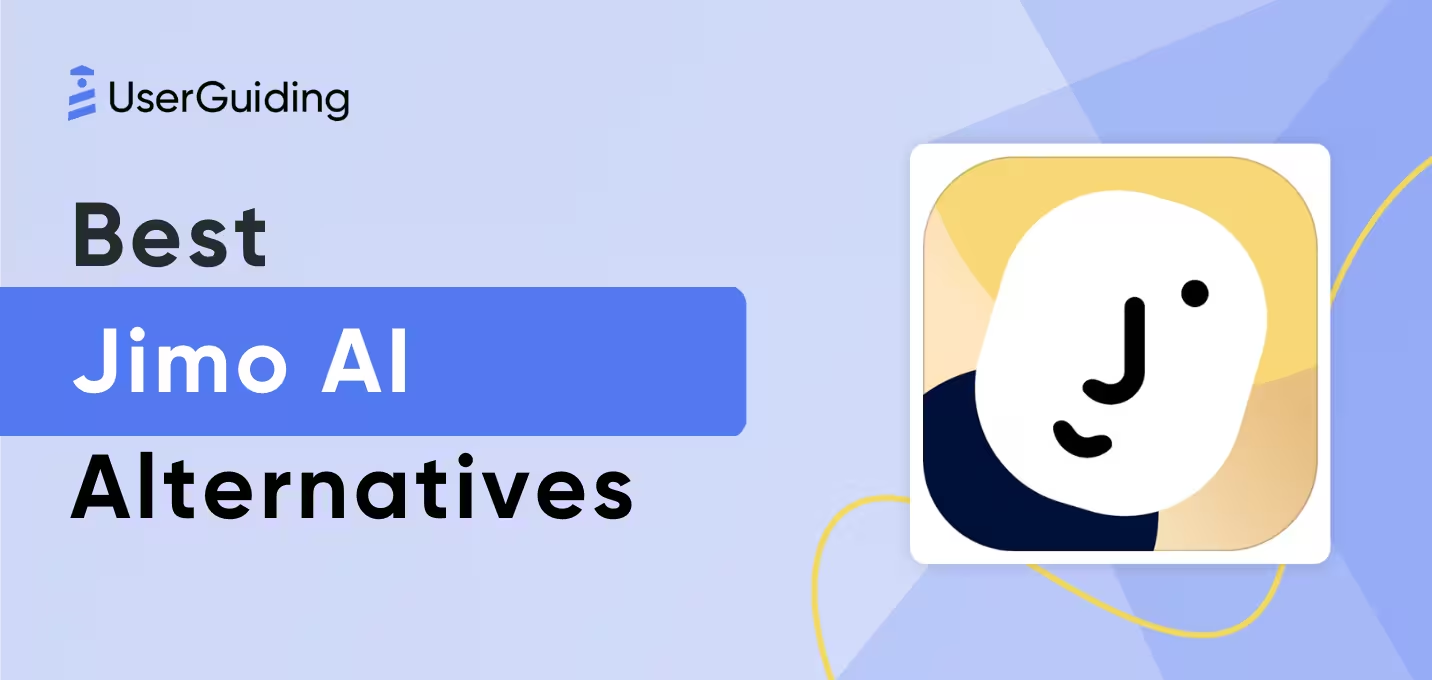

Have you ever felt lost trying to figure out how a new tool works, clicking aimlessly through features that make little sense?
Been there, my friend.
It’s frustrating when products don’t guide us through their functionalities smoothly, leaving us wondering if we’re missing out on something crucial.
Well, this is where interactive tours come in, stepping up as your friendly guide.
Not only do they help users navigate your product, but they also become a key player in the game of customer retention.
Let’s face it—keeping customers hooked is no easy feat.
But here’s the good news: an interactive, personalized experience can make all the difference.
And guess what? It’s not as complex as you think.
TL;DR
- Interactive tours guide users through essential features, reducing confusion and increasing product adoption.
- Customer retention is about keeping customers engaged and loyal to your product, which costs less than acquiring new ones.
- Personalization in tours boosts engagement by addressing individual user needs, improving satisfaction and retention.
- Interactive elements like clickable hotspots and tooltips make learning by doing more engaging than passive tutorials.
- Gamification motivates users with rewards and progress tracking, enhancing the onboarding experience.
- Brand consistency in tours builds trust and emotional connection, fostering customer loyalty.
- Self-service support through tours and in-app help empowers users, reducing reliance on customer support.
What Are Interactive Tours?

Imagine your users entering a new app or platform, unsure of where to start.
An interactive tour steps in as their personal guide, offering more than just basic hand-holding.
These tours are smart, adaptive experiences that lead users through the essential features, showing them not just how to use the product, but why they need it.
It’s all about delivering value upfront.
Interactive tours cater to individual user behaviors. Instead of a one-size-fits-all approach, they’re flexible, responding to the specific needs or goals of each user.
Whether it’s helping a new customer onboard without feeling lost or showing a returning user how to make the most of a new feature, these tours reduce friction and drive engagement by making sure users understand what’s in it for them—all without bombarding them with unnecessary details.
Take Notion, for example.
When you first start, it doesn't flood you with information.
Instead, the interactive tour picks up on your use case—whether you're managing personal tasks or collaborating with a team—and guides you through exactly what you'll need, when you need it.

This way, you’re not overwhelmed, and the product’s value is clear from day one.
What Is Customer Retention?
Customer retention is all about keeping your customers around for the long haul.
Imagine you’re running a coffee shop, and instead of just getting a few new people to try your lattes, you want the regulars—the ones who keep coming back for that exact cup of coffee they love.
That's what customer retention is for you.
It’s not just about getting someone to buy once; it’s about making sure they stick around and choose you again and again.
Well, acquiring new customers can cost way more than keeping the ones you already have.
Plus, loyal customers are more likely to recommend your product, leave good reviews, and even spend more on upgrades or additional services.
Think about it this way: ever subscribed to a streaming service for one show and ended up staying because they keep suggesting amazing things you never knew you wanted?
Been there, done that.
That’s a prime example of customer retention—keeping you engaged with content so good, you don’t want to leave.
The same concept applies to your business. You want your customers to feel like they’re getting so much value, they won’t even consider going anywhere else.
6 Best Practices to Improve Customer Retention with Interactive Tours
1. Personalize experiences for addressing specific needs and preferences
When you tailor interactive tours to your users' individual needs, you create a much more engaging and relevant experience.
Personalization can involve showing features based on a user’s role, previous behavior, or even industry.
🤔 Let’s say you’re onboarding new employees to a project management tool.
Instead of showing everyone the same generic tour, you could provide a tailored experience for project managers, focusing on reporting features, while team members see task-tracking tips.
🚀 Yours truly, UserGuiding, helped SaaS companies reduce churn by introducing personalized onboarding tours, along with many other things.
Here’s an example from one of those companies.

By segmenting users and guiding them based on their roles, companies saw higher engagement and quicker product adoption, thanks to UserGuiding.
2. Increase Engagement Using Interactive Adoption Elements
Interactive elements like clickable hotspots, tooltips, and pop-up explanations boost engagement because they let users learn by doing, rather than just reading.
The more your users engage, the more likely they are to understand and stick with your product.
😉 Consider an analytics tool where, instead of a lengthy tutorial, users can hover over specific features to see how they work.
This kind of hands-on interaction helps users retain more information and builds confidence.
3. Use Gamification and Visualization to Effectively Convey Information
I absolutely love good Gamification in UX.
I know I’m not the only one.
Gamifying your onboarding experience can make learning fun, keeping your users motivated and confident in the process, which is why people LOVE them.
Leaderboards, badges, and progress bars provide instant feedback and a sense of accomplishment.
Duolingo, the language-learning app, uses gamification brilliantly.

With progress streaks, daily goals, and rewards, users are encouraged to come back every day to stay on track.
Applying similar strategies in product tours can lead to higher customer retention for you as well.

A tiny feedback, tho. ✍🏼
Duolingo can probably chill a bit with that angry mascot of theirs—it’s lowkey terrifying sometimes.
You know what I’m talking about.

4. Foster Customer Loyalty and Repeat Business with Brand Awareness
Building brand awareness through interactive tours not only helps users understand your product but also deepens their emotional connection to your brand.
When you maintain a consistent voice, tone, and visual style, you’re reinforcing the identity of your business with every interaction.
It’s about more than just delivering information—it’s about creating an experience that feels uniquely "you."
💡 For instance, Slack’s playful, informal tone in its product guides is a perfect example of how branding can make a difference.

The relaxed and approachable language reflects Slack’s overall brand personality, making users feel more at ease with the platform.
It turns ✨potentially dry instructional content✨ into something that feels fun and engaging.
That connection keeps users coming back because they feel like they're part of a community rather than just using a tool. It’s only fair, I mean, right?
When you apply that same principle to your interactive tours, you’re not only educating users about your product, but also building trust and familiarity.
5. Provide Self-Service Support for Higher Satisfaction
Users appreciate the independence that comes with self-service options, as it allows them to solve issues on their own terms without relying on customer support.
By integrating guided tours, knowledge bases, and in-app help directly into your platform, you empower users to find the answers they need, when they need them.
This not only boosts user satisfaction but also reduces the pressure on your support team.
👇🏻 Canva is a great example of how to do this effectively.

With their interactive tours and well-placed help articles, users are equipped to learn the platform at their own pace.
New users can start designing almost immediately, without the need to search for tutorials elsewhere or contact support.
This frictionless experience makes users feel more confident in navigating the platform, ultimately increasing their engagement and retention.
By enabling self-service, you’re giving users control, which leads to a more positive and empowering user experience.
6. Design an Overall Experience Rather than Focusing on Individual Modules
While it’s tempting to guide users through each feature separately, focusing on the overall journey is more effective for long-term retention.
Your users are not just there to learn individual features—they’re there to achieve a goal.
Designing an experience that shows how everything fits together will provide more value.
Instead of offering separate product tours for each tool, a CRM platform could create an interactive tour that walks users through the entire customer journey—from lead generation to conversion to follow-up.
Wrapping Up For Today
So, there you have it.🤩
By offering personalized, hands-on experiences that speak directly to users' needs, you’re not only guiding them but also giving them a reason to stick around for the long haul.
And the best part?
It doesn’t take a monumental effort to implement these strategies.
Small, thoughtful changes—like adding some gamification, creating brand consistency, and focusing on self-service—can have a huge impact on keeping your customers engaged and coming back for more.
Frequently Asked Questions
How Do Interactive Tours Improve Customer Retention?
Interactive tours enhance customer retention by offering personalized, hands-on experiences that make users feel more confident and connected with the product.
Can Interactive Tours Reduce Customer Support Inquiries?
Yes, by providing self-service options and guiding users through key features, interactive tours can significantly lower the need for direct customer support.

















.svg)
.svg)
.svg)
.svg)
.svg)

.svg)
.svg)












.svg)
.svg)




.png)
















